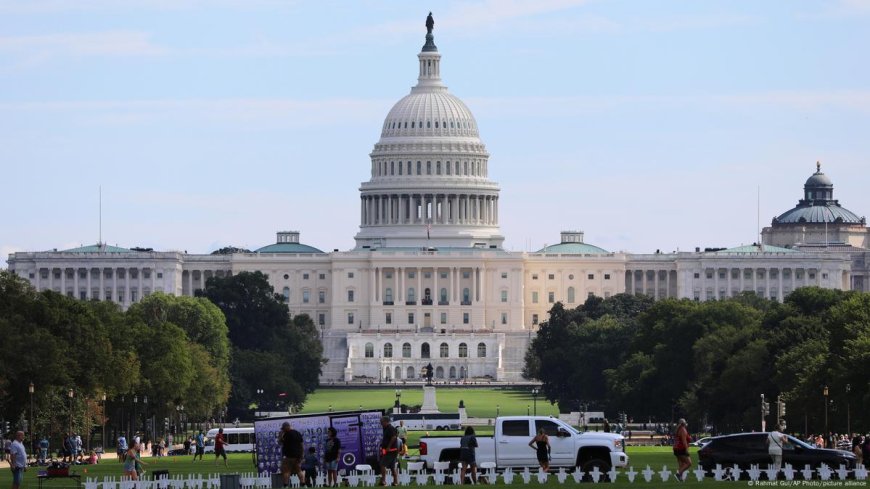White House Warns of Imminent Layoffs as Government Shutdown Looms
The White House has warned that federal employee layoffs under the ongoing U.S. government shutdown are “imminent,” with Vice President JD Vance and OMB officials signaling that reductions in force (RIFs) could begin within days.

The White House has warned that layoffs of federal employees under the ongoing government shutdown are expected to begin “very soon,” signaling a major escalation in the economic and administrative fallout from the congressional appropriations lapse that took effect at midnight on October 1.
Vice President JD Vance, speaking at a press conference Wednesday afternoon, confirmed that the administration is preparing to move forward with reductions in force (RIFs) if the shutdown drags on. His remarks came as federal agencies grapple with how to manage essential operations while appropriations remain frozen.
Trump Administration Issues Layoff Warnings
According to White House officials, at least one agency — the U.S. Patent and Trademark Office (USPTO) — has already issued formal layoff notices to employees. Other agencies are reportedly preparing similar actions, though the administration has not disclosed which departments will be affected next.
Vice President Vance underscored the urgency of the matter:
“If this thing drags on for another few days, or, God forbid, another few weeks, we are going to have to lay people off. We’re going to have to save money in some places so that essential services don’t get turned off in other places,” he told reporters.
The Office of Management and Budget (OMB) has taken a more direct approach. Director Russell Vought reportedly told House Republicans in a private call that agency-level RIFs would begin “in a day or two,” according to reporting by Politico.
A Shift From Previous Shutdowns
In past shutdowns, hundreds of thousands of federal workers were placed on furlough, with the assurance of being reinstated and receiving back pay once funding was restored. The Trump administration’s decision to initiate layoffs instead of furloughs marks a dramatic shift with more permanent consequences for the federal workforce.
White House: Layoffs Coming “Imminently”
When asked about the timeline for layoffs, White House Press Secretary Karoline Leavitt said the administration considers them to be “imminent.”
“Two days. Imminent. Very soon. All of those things are very synonymous with one another,” Leavitt told reporters.
Her remarks reinforced the urgency suggested by both Vice President Vance and OMB Director Vought, suggesting that the administration may attempt to implement reductions in force within days, not weeks.
Despite the White House’s warnings, experts on federal workforce management have questioned whether layoffs can legally or practically be executed on such a short timeline.
The reduction in force (RIF) process is highly complex, requiring agencies to evaluate employees based on multiple criteria, including:
-
Tenure and length of service
-
Veterans’ preference
-
Employee performance ratings
-
Seniority within competitive levels
Because of these requirements, implementing a RIF typically takes months, not days. The process also exposes agencies to legal challenges, as employees can contest RIF decisions if they believe procedural errors were made.
“Implementing RIFs in less than a week is virtually impossible under federal workforce law,” one employment law expert told reporters. “If agencies try to push through layoffs without following due process, they will face immediate lawsuits and injunctions.”
While the White House has floated layoffs as a tool to reduce costs during the shutdown, the vast majority of federal workforce reductions in 2025 have already come through the Deferred Resignation Program (DRP).
According to government data, nearly 200,000 federal employees have left their jobs this year, with about 154,000 of those departures coming through voluntary resignations under the DRP program. Only a small fraction of reductions have come from layoffs or RIFs.
Political and Economic Implications
The administration’s hardline stance on layoffs is expected to further escalate tensions in Washington as Congress remains deadlocked over a budget resolution. The shutdown, now entering its second day, is already fueling uncertainty for federal employees, contractors, and the broader U.S. economy.
Economists warn that prolonged shutdowns have ripple effects beyond government payrolls, delaying contracts, slowing agency approvals, and weakening investor confidence. Businesses reliant on federal clients — including defense contractors, technology firms, and research organizations — may face delayed payments and project freezes.
What Comes Next?
As of Thursday, Congress has not reached an agreement to end the shutdown, and negotiations remain stalled over spending caps and deficit reduction measures. If a resolution is not reached soon, the Trump administration’s warnings suggest layoffs may begin rolling out across multiple agencies within days.
However, many experts remain skeptical about the timeline and legality of the proposed RIFs, raising the possibility that the administration’s warnings may be more about political leverage than imminent workforce reductions.

 Mohammad Adil
Mohammad Adil